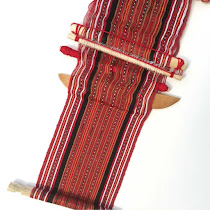Certificated awarded for the best of best textile

Criteria used for judging The judging session was held on April 26 where the products were selected by panel of 12 judges comprising of both national and international experts on handicrafts. The criteria used to judge the products were authenticity,design ,skills or technique, material, finishing marketing and innovation. Based on the scores that meet the bhutan seal standards the products are certified with either the seal of quality or seal of excellence. Although the trade department received 18 products this year, no products was awarded the seal of excellence. Quality being judged Focusing on bhutanese handicrafts, the products are caterogised into two broad categoried- traditional and non traditional or contemporary zorig chusam (Bhutanese handicrafts). Products that qualified for seal of quantity were brass doorknob from the traditional category while the non traditional products included textiles and a contemporary painting. Participants from the bronze casting wor...





